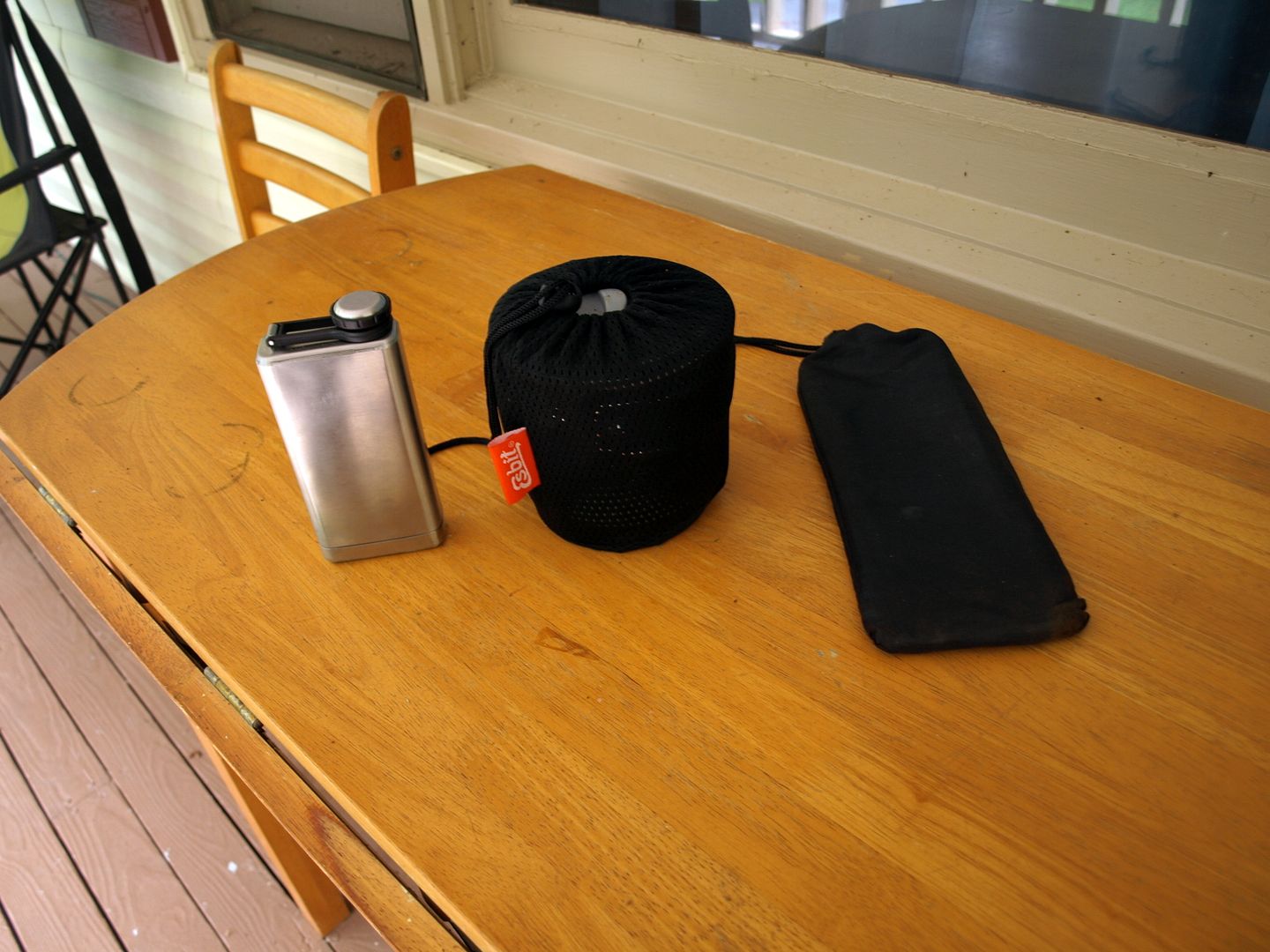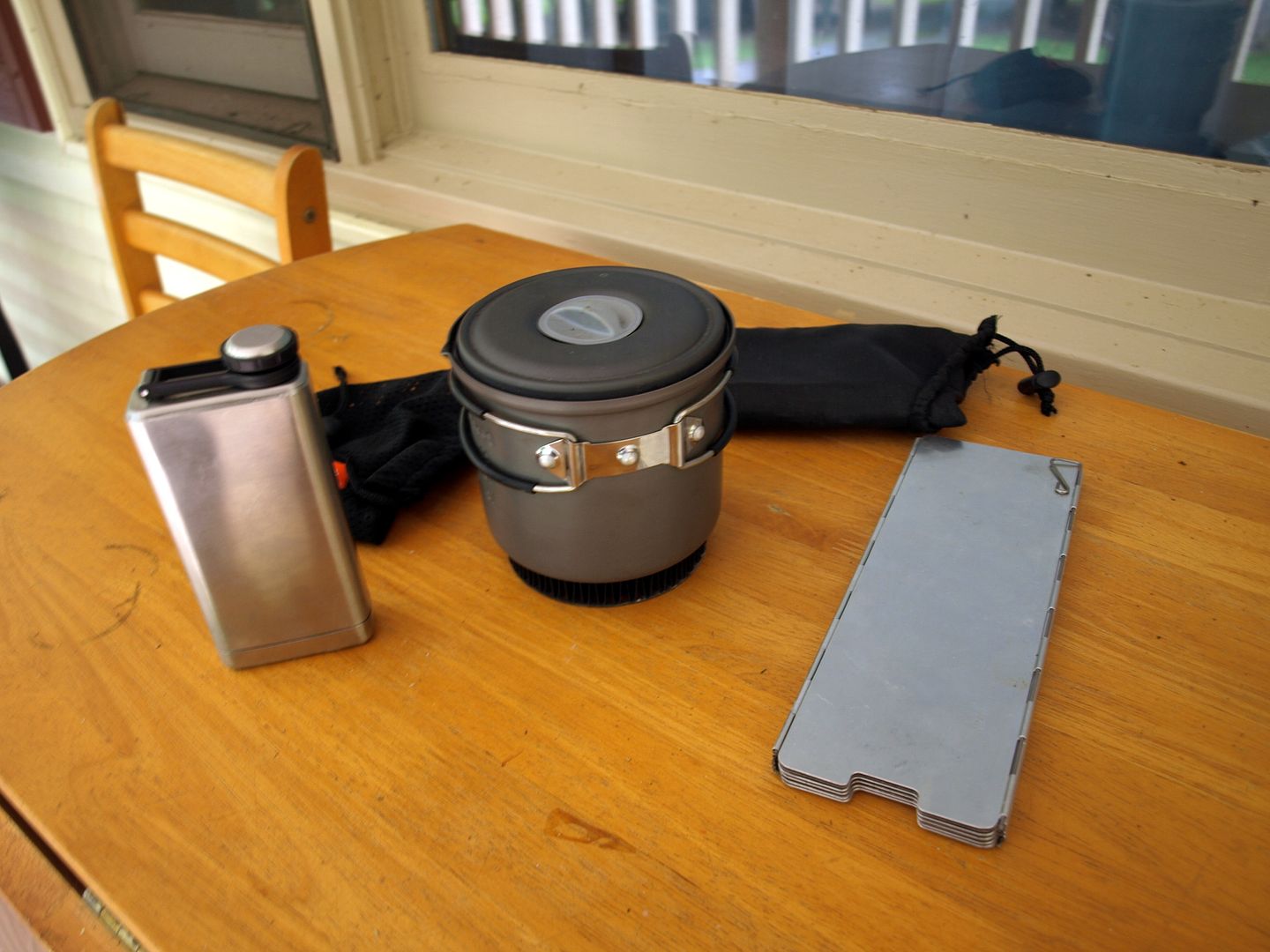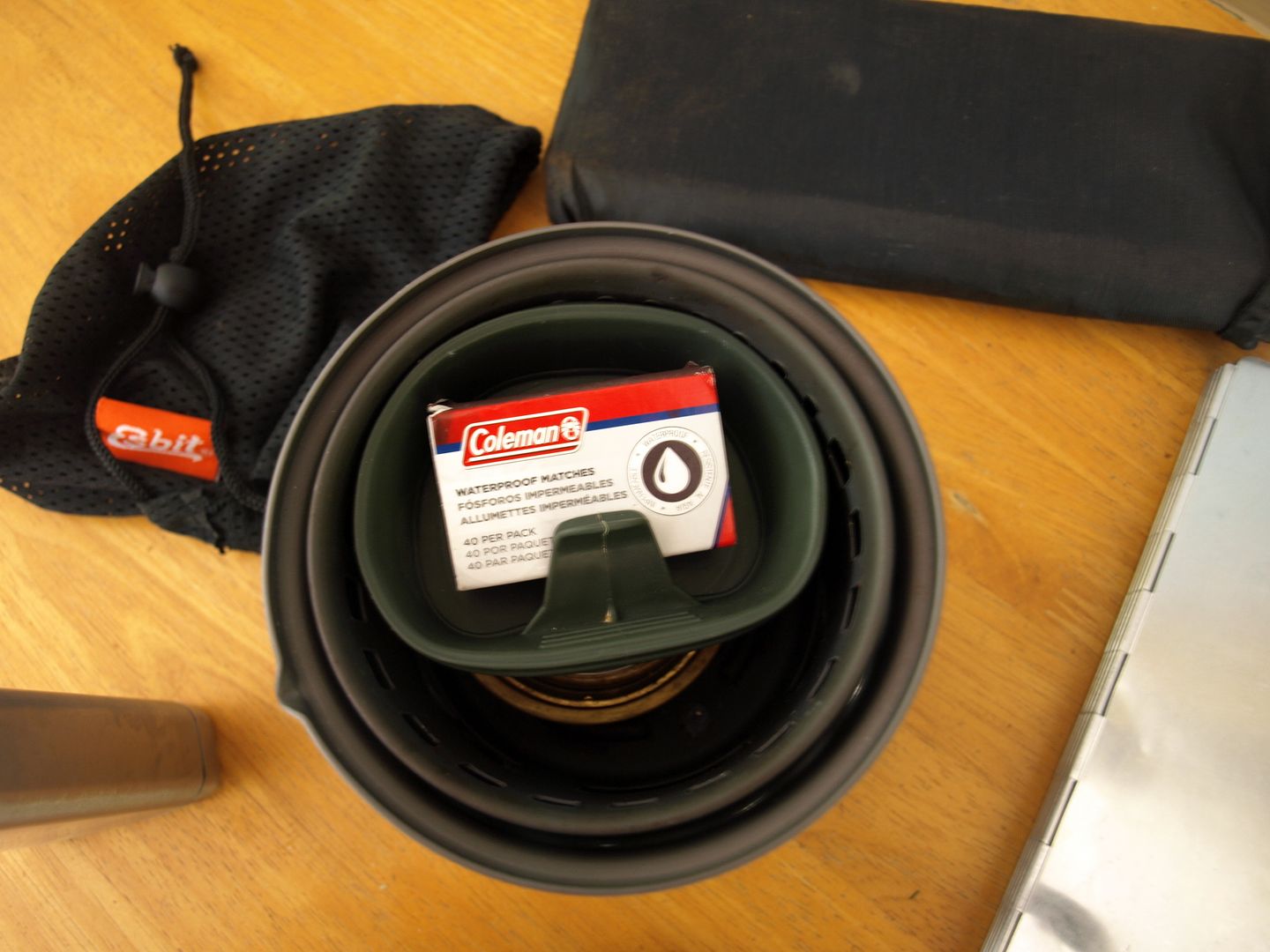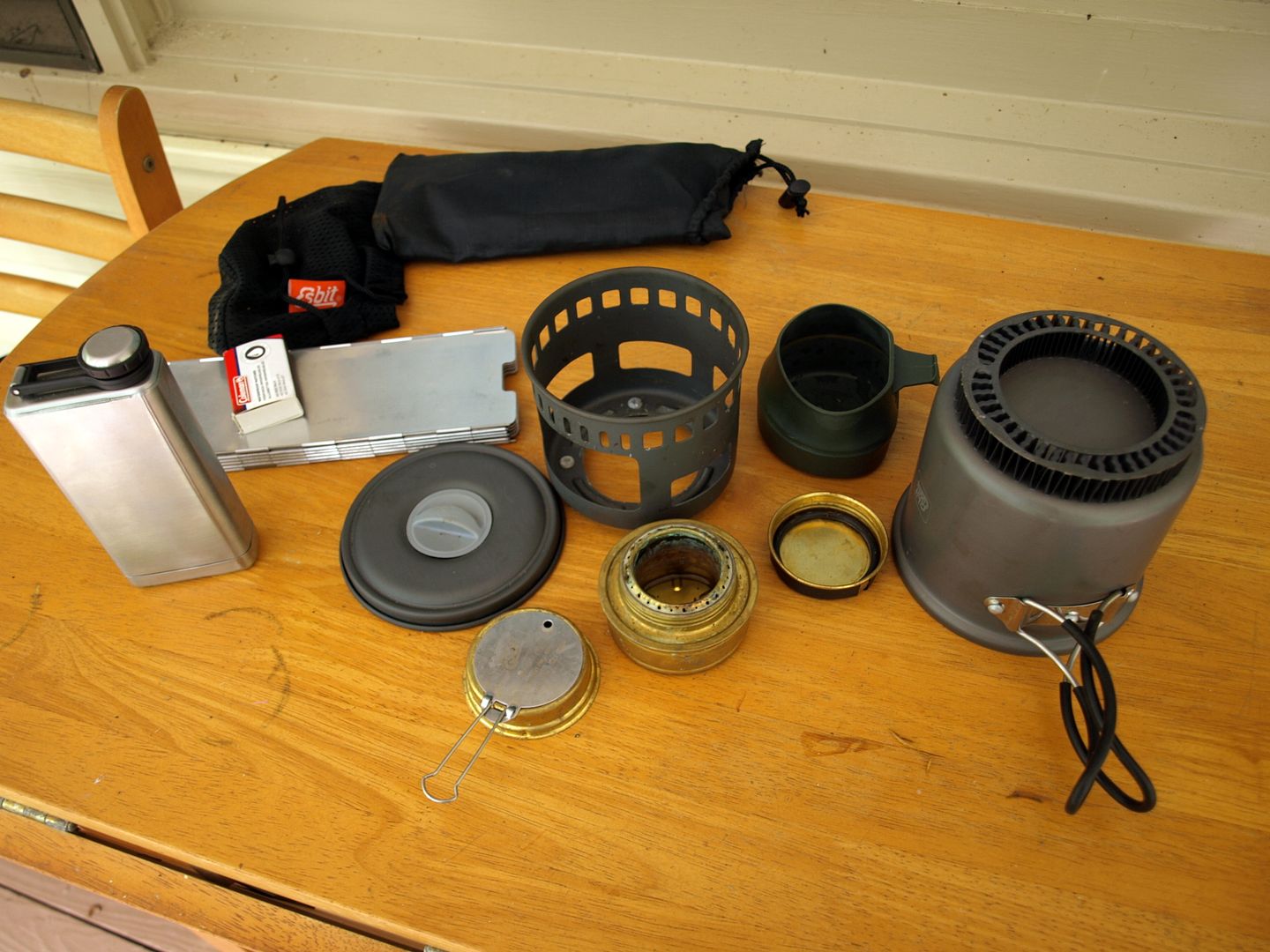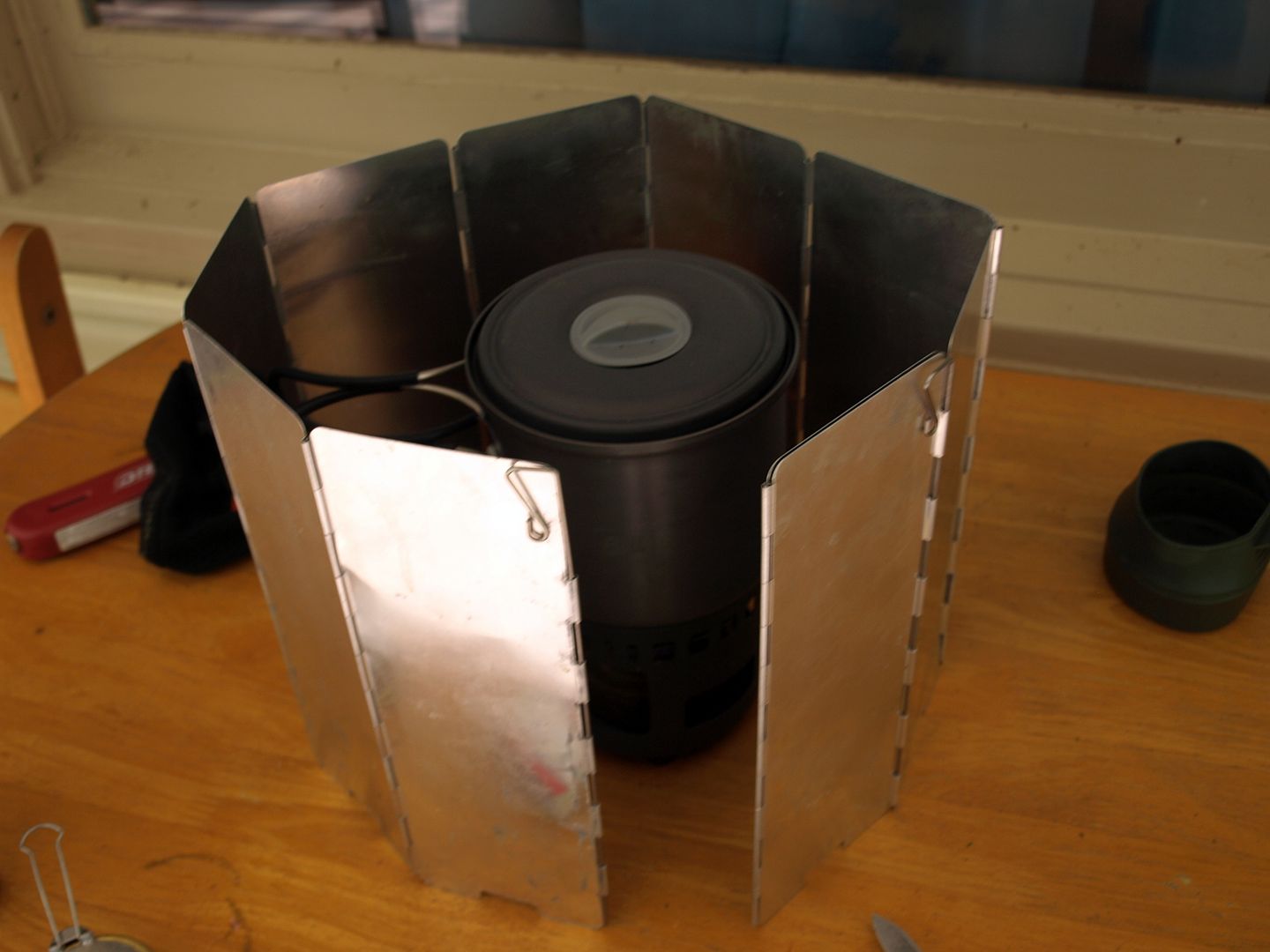Time for show and tell. What do you carry for an alcohol stove?
I'll start...
Ok, I took some shots of my alcohol rigs during an excruciating conference call today.
Three alcohol rigs. Details are in the notes on the Fllkr pages, so click on the pictures for more details.
My tea making rig based on a Batchstovez 1.0 and Stanley pot.
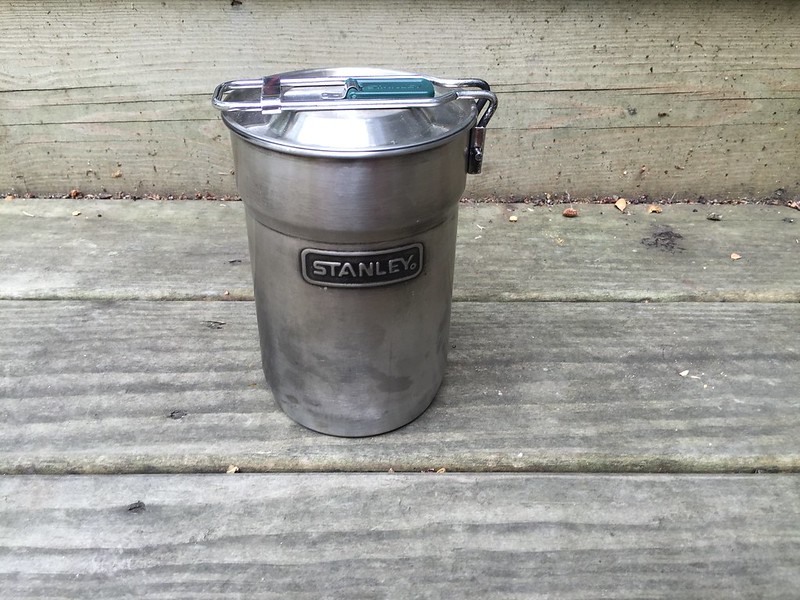 Tea Kit - Packed by Pinnah, on Flickr
Tea Kit - Packed by Pinnah, on Flickr
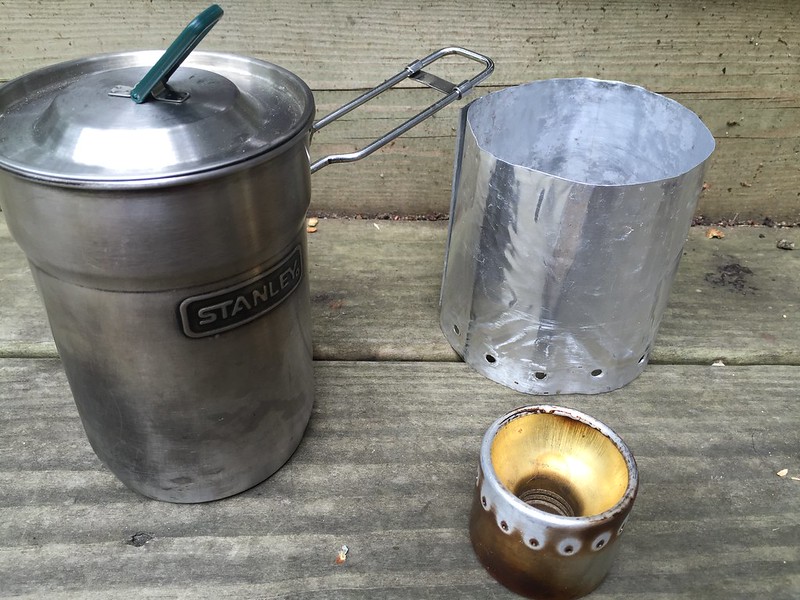 Tea Kit - Parts by Pinnah, on Flickr
Tea Kit - Parts by Pinnah, on Flickr
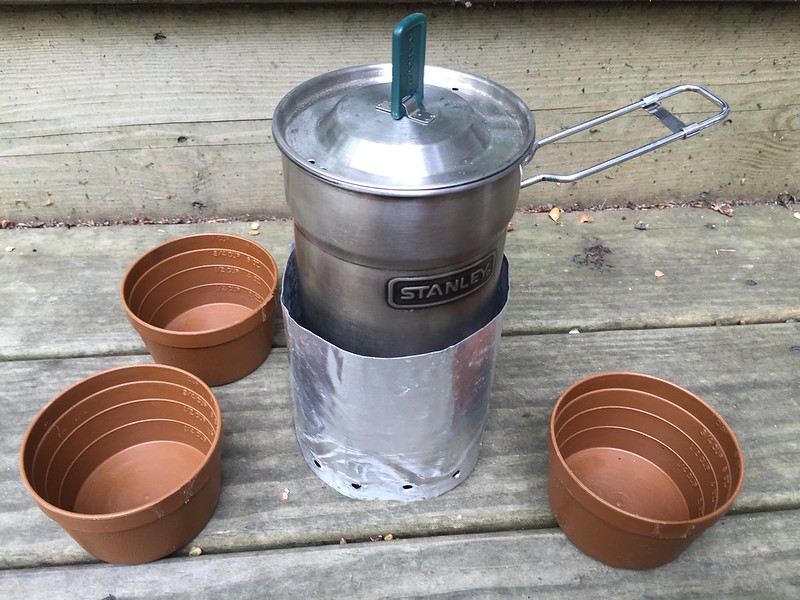 Tea Kit - Assembled by Pinnah, on Flickr
Tea Kit - Assembled by Pinnah, on Flickr
My 1-2 person rig based on a Batchstovez 2.0 and GSI Solist pot.
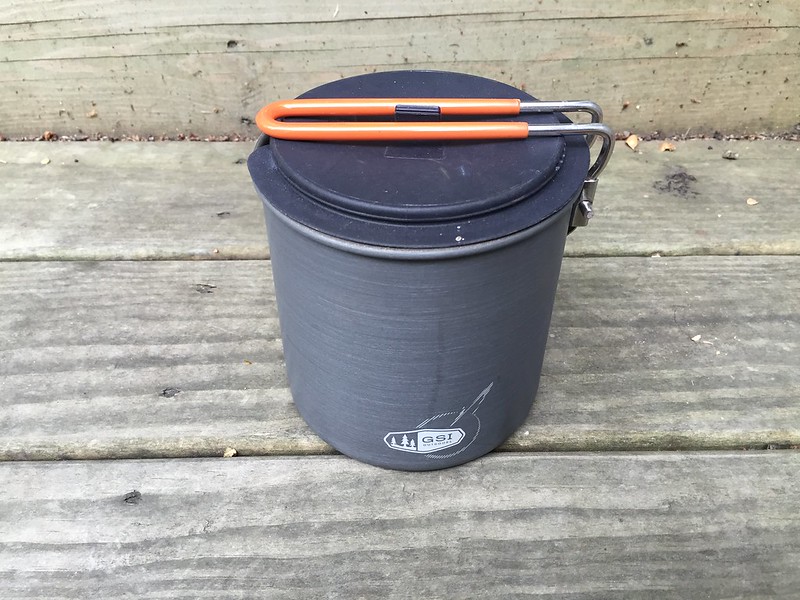 2 Person Kit - Packed by Pinnah, on Flickr
2 Person Kit - Packed by Pinnah, on Flickr
 2 Person Kit - Parts by Pinnah, on Flickr
2 Person Kit - Parts by Pinnah, on Flickr
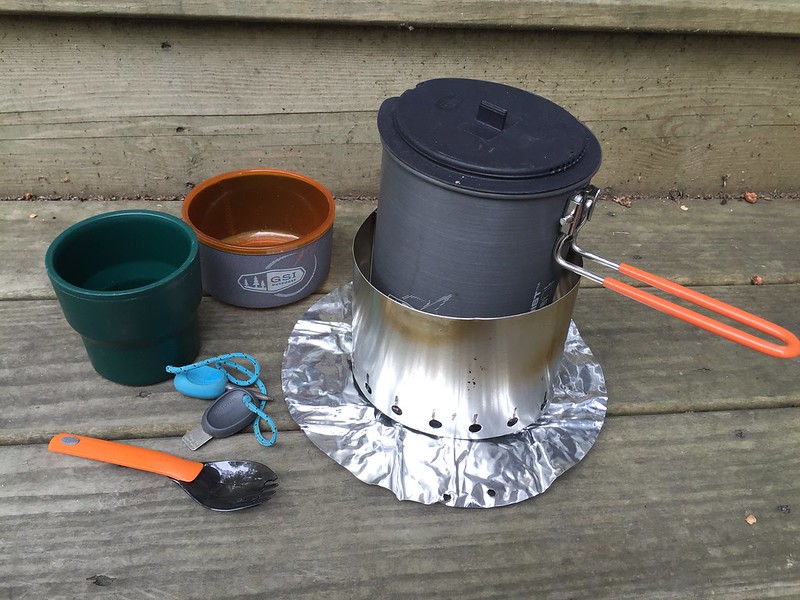 2 Person Kit - Assembled by Pinnah, on Flickr
2 Person Kit - Assembled by Pinnah, on Flickr
My 3 - 4 person rig based on a Trangia burner, Mojo pot stand and a Open Country 2 quart pot.
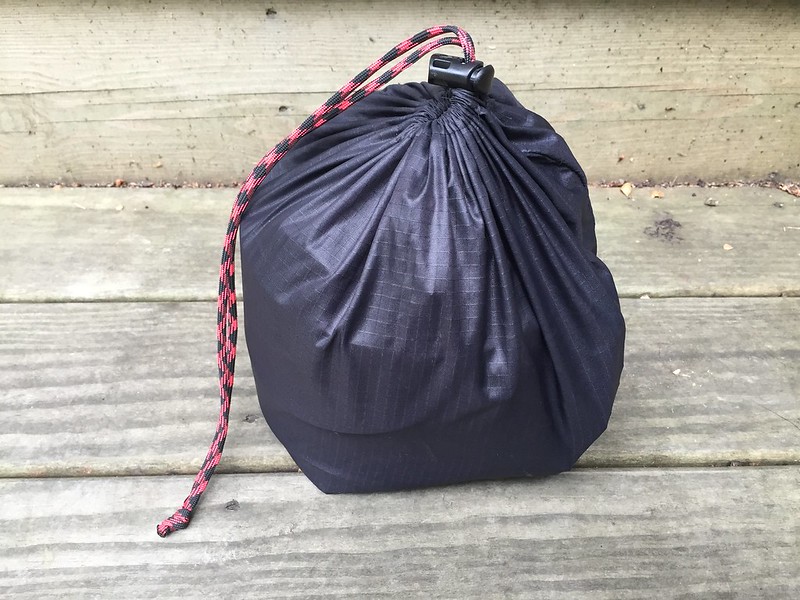 4 Person Kit - Packed Up by Pinnah, on Flickr
4 Person Kit - Packed Up by Pinnah, on Flickr
 4 Person Kit - Parts by Pinnah, on Flickr
4 Person Kit - Parts by Pinnah, on Flickr
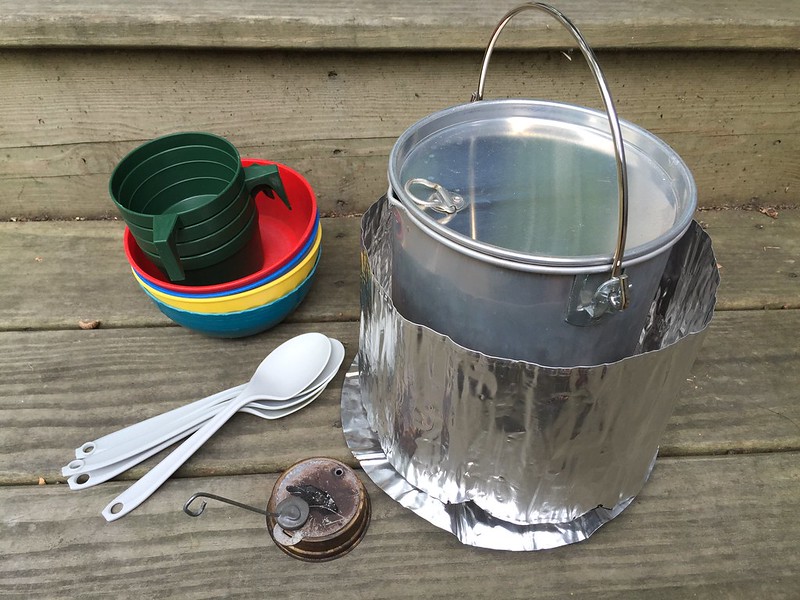 4 Person Kit - Assembled by Pinnah, on Flickr
4 Person Kit - Assembled by Pinnah, on Flickr
Thanks for looking.
I'll start...
Ok, I took some shots of my alcohol rigs during an excruciating conference call today.
Three alcohol rigs. Details are in the notes on the Fllkr pages, so click on the pictures for more details.
My tea making rig based on a Batchstovez 1.0 and Stanley pot.
 Tea Kit - Packed by Pinnah, on Flickr
Tea Kit - Packed by Pinnah, on Flickr Tea Kit - Parts by Pinnah, on Flickr
Tea Kit - Parts by Pinnah, on Flickr Tea Kit - Assembled by Pinnah, on Flickr
Tea Kit - Assembled by Pinnah, on FlickrMy 1-2 person rig based on a Batchstovez 2.0 and GSI Solist pot.
 2 Person Kit - Packed by Pinnah, on Flickr
2 Person Kit - Packed by Pinnah, on Flickr 2 Person Kit - Parts by Pinnah, on Flickr
2 Person Kit - Parts by Pinnah, on Flickr 2 Person Kit - Assembled by Pinnah, on Flickr
2 Person Kit - Assembled by Pinnah, on FlickrMy 3 - 4 person rig based on a Trangia burner, Mojo pot stand and a Open Country 2 quart pot.
 4 Person Kit - Packed Up by Pinnah, on Flickr
4 Person Kit - Packed Up by Pinnah, on Flickr 4 Person Kit - Parts by Pinnah, on Flickr
4 Person Kit - Parts by Pinnah, on Flickr 4 Person Kit - Assembled by Pinnah, on Flickr
4 Person Kit - Assembled by Pinnah, on FlickrThanks for looking.



